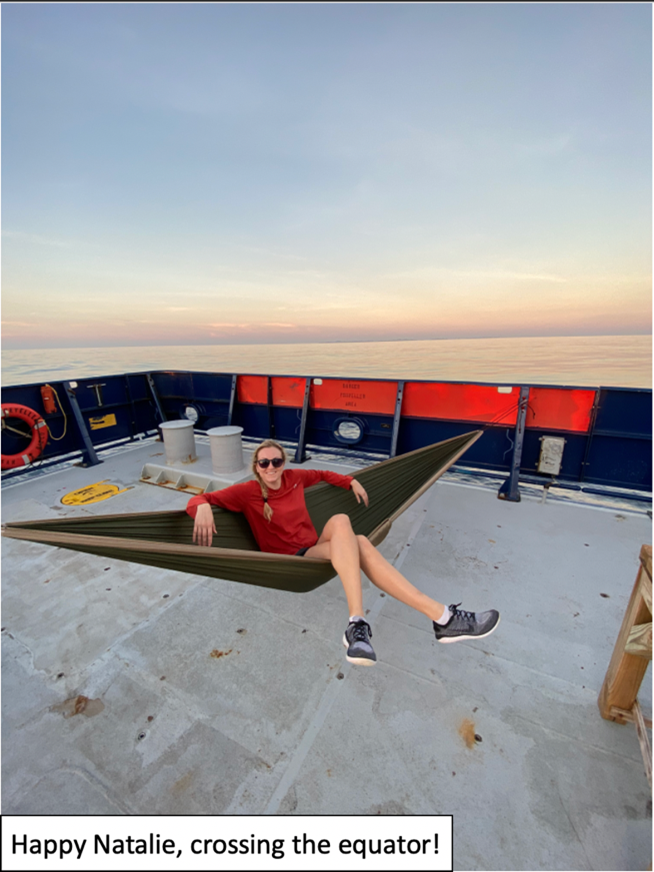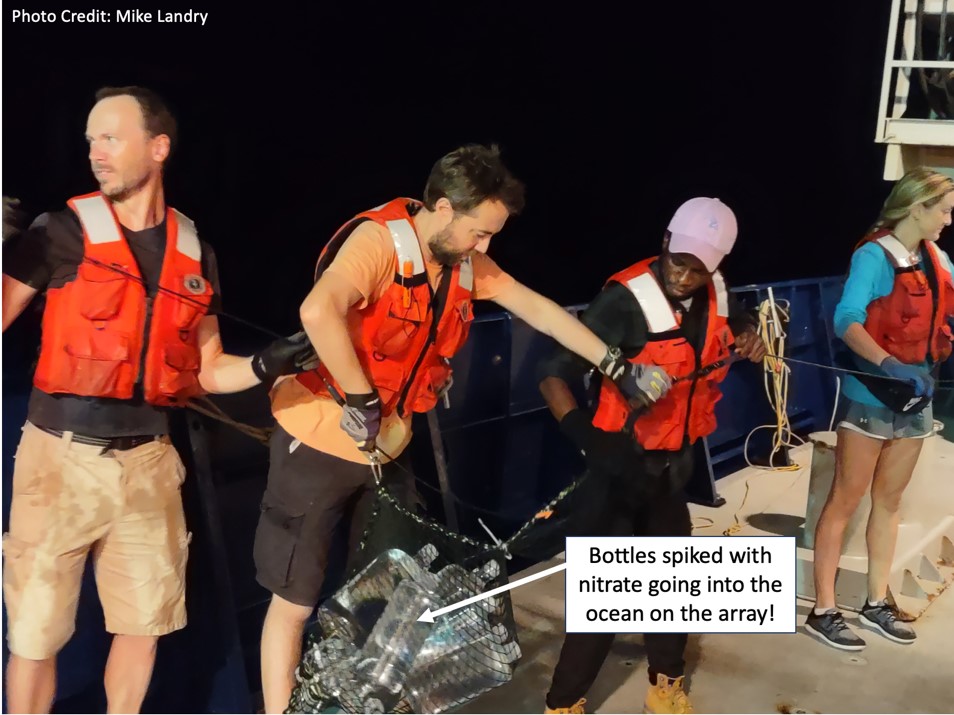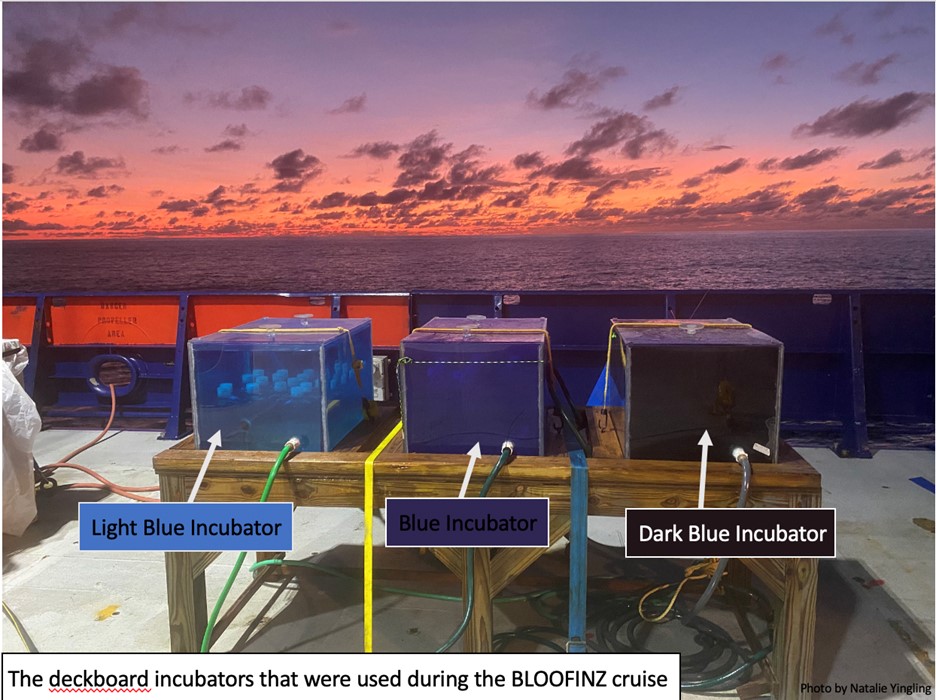 Hi! My name is Natalie Yingling and I am a 4th year Ph.D. student in Dr. Mike Stukel’s lab at Florida State University. The BLOOFINZ cruise is my 5th research cruise, the longest and hottest, since coming to FSU. One of the things I love most about being out at sea is that not only do you get to see colorful, bright sunrises every morning but you have Chef Richard, making everyone tasty meals 3 times a day. One of the things that I dislike about being out at sea is when we hit rough weather and you have to fight gravity to open every door. Our lab does most of our research during the night, which not only saves us money from buying tons of sunscreen but also allows us to sample phytoplankton before photosynthesis and growth happens!
Hi! My name is Natalie Yingling and I am a 4th year Ph.D. student in Dr. Mike Stukel’s lab at Florida State University. The BLOOFINZ cruise is my 5th research cruise, the longest and hottest, since coming to FSU. One of the things I love most about being out at sea is that not only do you get to see colorful, bright sunrises every morning but you have Chef Richard, making everyone tasty meals 3 times a day. One of the things that I dislike about being out at sea is when we hit rough weather and you have to fight gravity to open every door. Our lab does most of our research during the night, which not only saves us money from buying tons of sunscreen but also allows us to sample phytoplankton before photosynthesis and growth happens!
One of the projects that I have been involved with on this cruise is measuring phytoplankton’s nitrogen uptake, in the forms of both nitrate and ammonium, in-situ and on deck in incubators. We want to know what type of nitrogen is supporting phytoplankton communities in the Argo Basin of the Indian Ocean and if the phytoplankton community is nutrient or light limited.

The first type of nitrogen uptake measurement is in-situ nitrate uptake, meaning that we are measuring nitrate “in-situ” or “in its original place”. We collect water samples every day of the cycle at the 2 AM CTD from various depths like 5 meters, 20 m, 40 m, 50 m, 60 m and 70 m. Once we have our bottles of water from each depth, we spike each of them with a known amount of isotopically labeled nitrate. We then put these bottles into mesh bags that we clip onto a long line called the array and send in into the ocean for 24 hours. For more information on the array, read Dr. Stukel’s post called Lagrangian drifters on the blog!
We also measure nitrogen uptake on our deckboard incubators, as seen in the photo. These incubators were built by our very own Dr. Stukel and have different shades of blue acrylic sheets that can be added into the incubators to change the light levels. Light can only penetrate so far and there is less light available as you travel further into the ocean. When we take a water sample with the CTD from 70 meters below the surface, we know that the phytoplankton communities that grow and thrive at this depth are adjusted to grow at a lower light level. Therefore, it would be unnatural, like a polar bear in Florida, to incubate that community of phytoplankton on deck in an incubator with bright light or something similar to what we see at the surface of the ocean! To keep conditions as natural as possible, we have 3 different light levels that symbolize 3 different depths in the Argo Basin (light blue= ~5 meters, blue = ~30 meters and dark blue=~70 meters).

The incubators allow us to determine nitrate and ammonium uptake on shorter time scales, typically 4 to 6 hours, compared to the in-situ experiments that go on the array, into the ocean, for a full day. In addition, the incubators allow us to research how light throughout the day may impact nitrogen uptake with diel experiments, the word diel comes from the Latin dies day which means 24 hours. We look forward to analyzing our nitrogen samples to see how this region compares to the data we collected on our previous tuna study in the Gulf of Mexico!
